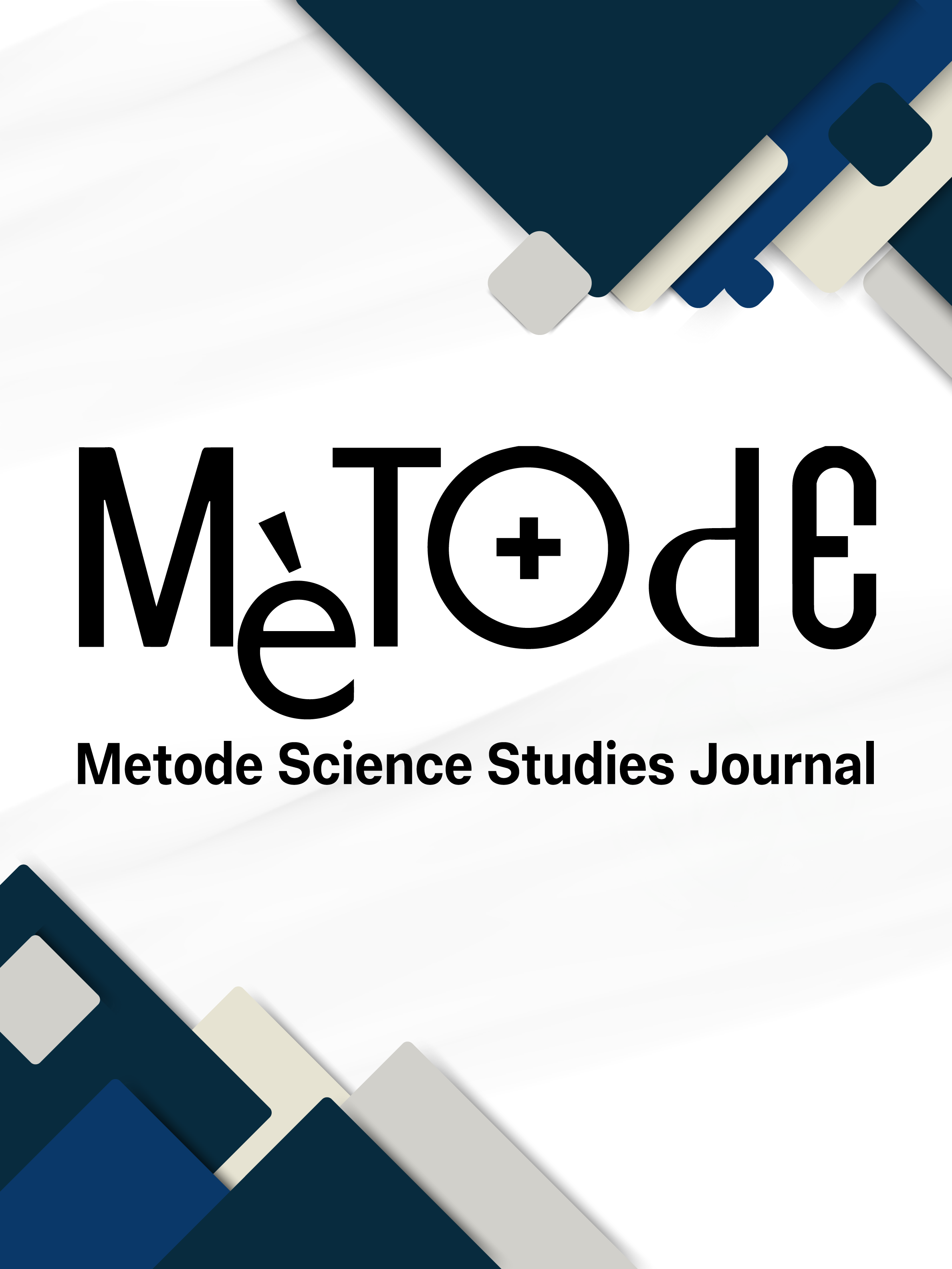Copper circular economy
Challenges of the energy and digital transition
DOI:
https://doi.org/10.7203/metode.15.27181Keywords:
energy transition, circular economy, recycling, secondary resources, copper Abstract
Abstract
Copper is one of the key metals required for the digital and energy transition and so its demand will increase in the coming years. However, primary extraction poses increasing environmental problems because of the progressive decline in the mineral concentration of copper deposits (ore grade). In this context, electronic waste is becoming a very promising source of secondary copper. However, this form of copper recovery presents a number of technological and chemical challenges, including the use of renewable energy, separation of plastics from other waste, and increasing process efficiency. Given the thermodynamic limitations of these processes, other non-technological factors are becoming very important in the transition.
 Downloads
Downloads
 References
References
Calvo, G., Mudd, G., Valero, A., & Valero, A. (2016). Decreasing ore grades in global metallic mining: A theoretical issue or a global reality? Resources, 5(4), 36. https://doi.org/10.3390/resources5040036
Carrara, S., Alves Dias, P., Plazzotta, B., & Pavel, C. (2020). Raw materials demand for wind and solar PV technologies in the transition towards a decarbonised energy system. Publications Office of the European Union. https://doi.org/10.2760/160859
Deetman, S., de Boer, H. S., Van Engelenburg, M., van der Voet, E., & van Vuuren, D. P. (2021). Projected material requirements for the global electricity infrastructure – generation, transmission and storage. Resources, Conservation and Recycling, 164, 105200. https://doi.org/10.1016/j.resconrec.2020.105200
Forti, V., Baldé, C. P., Kuehr, R., & Bel, G. (2020). The global e-waste monitor 2020: Quantities, flows, and the circular economy potential. United Nations University (UNU), United Nations Institute for Training and Research (UNITAR), International Telecommunication Union (ITU) & International Solid Waste Association (ISWA).
Gregoir, L., & van Acker, K. (2022). Metals for clean energy: Pathways to solving Europe’s raw materials challenge. KU Leuven. https://eurometaux.eu/media/rqocjybv/metals-for-clean-energy-final.pdf
Huisman, J., Leroy, P., Tertre, F., Ljunggren Söderman, M., Chancerel, P., Cassard, D., Løvik, A. N., Wäger, P., Kushnir, D., Susanne Rotter, V., Mählitz, P., Herreras, L., Emmerich, J., Hallberg, A., Habib, H., & Wagner, M. (2017). ProSUM final report: Prospecting secondary raw materials in the urban mine and mining wastes. ProSUM. https://prosumproject.eu/sites/default/files/DIGITAL_Final_Report.pdf
Hund, K., Porta, D. La, Fabregas, T. P., Laing, T., & Drexhage, J. (2020). Minerals for climate action: The mineral intensity of the clean energy transition. World Bank. https://pubdocs.worldbank.org/en/961711588875536384/Minerals-for-Climate-Action-The-Mineral-Intensity-of-the-Clean-Energy-Transition.pdf
International Copper Study Group. (2023). The world copper factbook. ICSG. https://icsg.org/copper-factbook
International Energy Agency. (2021). The role of critical minerals in clean energy transitions. IEA. https://www.iea.org/reports/the-role-of-critical-minerals-in-clean-energy-transitions
Loibl, A., & Tercero Espinoza, L. A. (2021). Current challenges in copper recycling: Aligning insights from material flow analysis with technological research developments and industry issues in Europe and North America. Resources, Conservation and Recycling, 169, 105462. https://doi.org/10.1016/j.resconrec.2021.105462
Mills, R. (2022, 27 october). Copper: The most important metal we are running short of. A head of the herd. https://aheadoftheherd.com/copper-the-most-important-metal-were-running-short-of-richard-mills/
Tabelin, C. B., Park, I., Phengsaart, T., Jeon, S., Villacorte-Tabelin, M., Alonzo, D., Yoo, K., Ito, M., & Hiroyoshi, N. (2021). Copper and critical metals production from porphyry ores and e-wastes: A review of resource availability, processing/recycling challenges, socio-environmental aspects, and sustainability issues. Resources, Conservation and Recycling, 170, 105610. https://doi.org/10.1016/j.resconrec.2021.105610
Torrubia, J., Parvez, A. M., Bassorgun, A., Charitos, A., Valero, A., & van der Boogaart, K. G. (2024). Copper recovery from electronic waste: An energy transition approach to decarbonise the industry. [Paper submitted for publication].
Torrubia, J., Valero, A., & Valero, A. (2022). Thermodynamic rarity assessment of mobile phone PCBs: A physical criticality indicator in times of shortage. Entropy, 24(1), 100. https://doi.org/10.3390/e24010100
Torrubia, J., Valero, A., & Valero, A. (2023). Energy and carbon footprint of metals through physical allocation. Implications for energy transition. Resources, Conservation and Recycling, 199, 107281. https://doi.org/10.1016/j.resconrec.2023.107281
Torrubia, J., Valero, A., Valero, A., & Lejuez, A. (2023). Challenges and opportunities for the recovery of critical raw materials from electronic waste: The Spanish perspective. Sustainability, 15(2), 1393. https://doi.org/10.3390/su15021393
Valero, A., Torrubia, J., Anía, M. Á., & Torres, A. (2021). Assessing urban metabolism through MSW carbon footprint and conceptualizing municipal-industrial symbiosis—the case of Zaragoza city, Spain. Sustainability, 13(22), 12724. https://doi.org/10.3390/su132212724
Valero Navazo, J. M., Villalba Méndez, G., & Talents Peiró, L. (2014). Material flow analysis and energy requirements of mobile phone material recovery processes. The International Journal of Life Cycle Assessment, 19, 567–579. https://doi.org/10.1007/s11367-013-0653-6
Van der Voet, E., Van Oers, L., Verboon, M., & Kuipers, K. (2019). Environmental implications of future demand scenarios for metals: Methodology and application to the case of seven major metals. Journal of Industrial Ecology, 23(1), 141–155. https://doi.org/10.1111/jiec.12722
Downloads
Published
How to Cite
-
Abstract242
-
PDF0
Issue
Section
License
Copyright (c) 2024 CC BY SA

This work is licensed under a Creative Commons Attribution-ShareAlike 4.0 International License.
![]()
All the documents in the OJS platform are open access and property of their respective authors.
Authors publishing in the journal agree to the following terms:
- Authors keep the rights and guarantee Metode Science Studies Journal the right to be the first publication of the document, licensed under a Creative Commons Attribution-NonCommercial-NoDerivatives 4.0 International License that allows others to share the work with an acknowledgement of authorship and publication in the journal.
- Authors are allowed and encouraged to spread their work through electronic means using personal or institutional websites (institutional open archives, personal websites or professional and academic networks profiles) once the text has been published.





